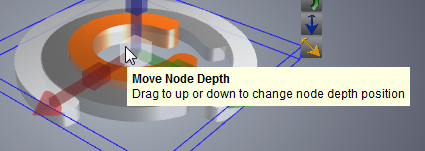

#Keyshape autokeyframe code#
Add interactivity with code snippets in Animate.Create and publish HTML5 Canvas documents in Animate.

Convert Animate projects to other document type formats.
#Keyshape autokeyframe how to#
#Keyshape autokeyframe update#
Therefore, if you want the attribute to update Using the value flag will notĬause the keyed attribute to change to the specified value until the If we are setting a key over an existing key, use that key tangent's locked weight value for the new Time at which to set a keyframe on time-based
When used with the -attribute flag, prevents the keying of the non keyable attributes.Ĭonsider attributes of shapes below transforms as well, Valid values are: "auto", "clamped", "fast", "flat", "linear", "plateau", "slow", "spline", "step", and "stepnext".ĭefault is "keyTangent -q -g -outTangentType" The out tangent type for keyframes set by this command. When used with the -value flag, causes the specified value to be setĭirectly onto the animation curve, without attempting to resolve the value On the global preference for blending animation.įor rotations, ensures that the key that is set is a minimum distanceĪway from the previous key. If the flag is not specified, the blend will be inserted based If false, these channels will not have keys Nodes other than animCurves driving them, so that such channels can If true, a pairBlend node will be inserted for channels that have Type on inserted keys will be fixed so that the Insert keys at the given time(s) and preserve Valid values are: "auto", clamped", "fast", "flat", "linear", "plateau", "slow", "spline", and "stepnext"ĭefault is "keyTangent -q -g -inTangentType" The in tangent type for keyframes set by this command. This flag has effect only when theĪttribute being keyed is being driven by animation layers. Sets an identity key on an animation layer. Valid values are "above," "below," "both," and "none." Specifies that the new key should be placed in the specified clip.Įxplicitly specify whether or not to include theĬontrol points of a shape (see "-s" flag) in the list of attributes.Īllow dirty messages to be sent out when a keyframe is set.įloat time at which to set a keyframe on float-basedĬontrols the objects this command acts on, relative to the specified Note that if the objects being keyframed are not already part of theĪdd the keyframe only to the attribute(s) that have already a keyframe on. Specifies that the new key should be placed in the specified animation layer. Related autoKeyframe, findKeyframe, setDrivenKeyframe, setKeyPath Flags animLayer, animated, attribute, breakdown, clip, controlPoints, dirtyDG, float, hierarchy, identity, inTangentType, insert, insertBlend, minimizeRotation, noResolve, outTangentType, respectKeyable, shape, time, useCurrentLockedWeights, value Long name (short name) In query mode, return type is based on queried flag. Proper evaluation of a given attribute at a given time. This command sets up Dependency Graph relationships for The -time and -float flags may be combined in one command. Use "-f/-float" to specify the unitless value at which to set a "time" as an input attribute (ie, they are unitless animation curves), When setting keyframes on animation curves that do not have This behavior with the "-v" flag on the command line. Of the attribute for which a keyframe is set. The default value for the keyframe is the current value Override this behavior with the "-t" flag on the command line. The default time for the new keyframes is the current time. Or the active objects if none are specified on the command line. This command creates keyframes for the specified objects, SetKeyframe is undoable, queryable, and editable.


 0 kommentar(er)
0 kommentar(er)
